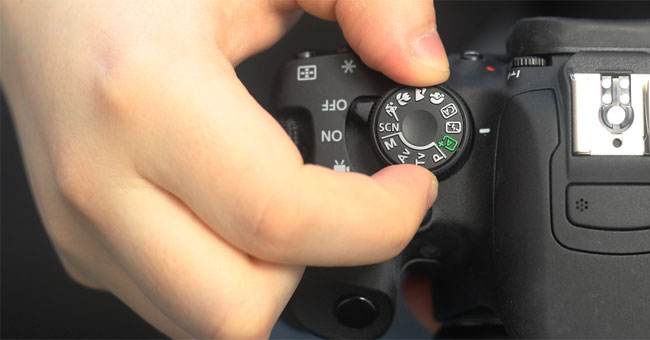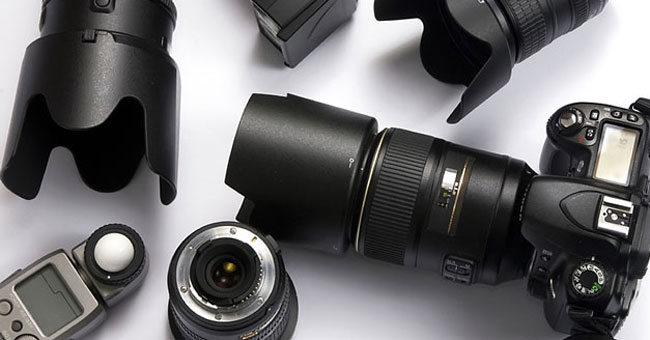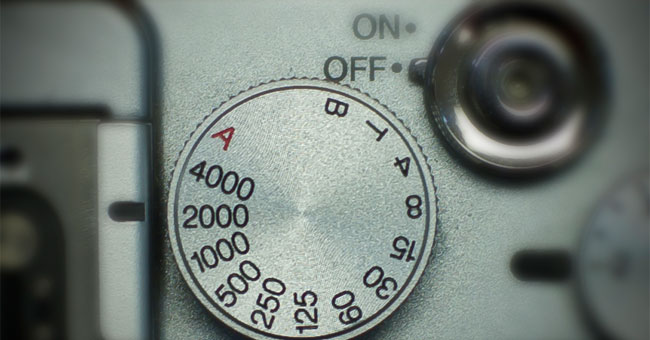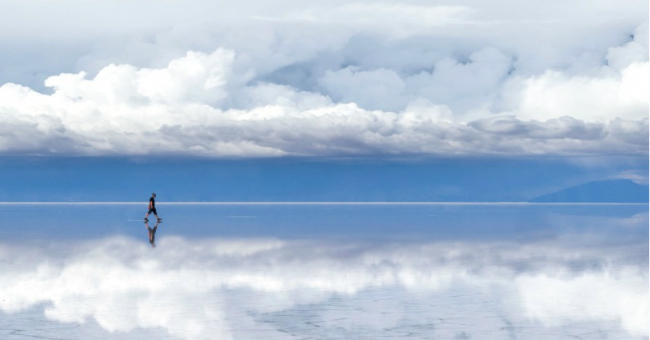Pocket basic terms in photography - P2
For those who are newly photographed people, the synthesized article Pocketing the basic terms in P1 photography has partly helped you get the necessary knowledge in this art already? And in the presentation, we provide you with the next part of the terminology when taking photos, as well as basic technical terms.
- You can refer to lesson 10 simple photography techniques for impressive photos
7. G
Ghosting - Ghosts
The phenomenon of white spots appears in the image because the light source is directed at the lens causing scattering inside the lens.
Guide number - Flash intensity
The level of the flash, often abbreviated to the GN index, indicates the maximum capacity that the flash can illuminate the subject within a specific distance. High flash intensity, the higher the exposure range. The light coverage of the lamp to the subject is calculated by dividing the intensity index of the lamp by the aperture index f. For example, the light intensity is 10 divided by f / 2, the effective light coverage is 5 meters.
8 HOURS
HD - High definition
Abbreviated from High Definition. Cameras with high-definition video recording function, such as Full HD (1920 x 1080), HD with definition (1280 x 720), SD (640 x 480) .
HDMI - High definition multimedia interface
Short for High Definition Multimedia Interface. Only the standard connection interface needed to playback a HD-quality video recorded with the camera. A connecting cable is capable of transmitting video and audio signals in digital form.
Highlight detail loss - Highlight detail loss
The condition of the image area is overexposed causing loss of highlights
High shutter speed - Shooting high shutter speed
Capture high shutter speeds like 1/500 - 1/4000 seconds to capture moving objects.
Histogram - Light chart
Chart format (graph) shows the brightness of the image and the amount of pixels at each level of the image. The chart with a horizontal axis indicates the brightness and amount of pixels from dark to bright areas from left to right. The vertical axis indicates the number of pixels in each brightness level, for example, if more pixels are found on the left side of the graph, meaning dark images and vice versa. The chart can be viewed right on the LCD screen as part of the capture data.
Hood - Sunshade Speaker
The device is attached to the front of the lens to prevent unwanted light from shining on the lens.

9. I
Image file - Image file
The most common image file is Jpeg, which is an image file that compresses the image file size. TIFF format is another popular image file format that does not allow image compression, similar to the raw (RAW) file format that users must "handle" with software on the computer.
Image size - Image size
The image details are determined horizontally by units of pixels (pixels). For example, the maximum image size of a digital camera with 8MP sensor is 3504 x 2336px.
Imaging engine - Image processor
As a processor attached to the camera, the algorithm will be used to process the image before saving the image to the memory card.
Imaging sensor / Sensor - Image sensor / Sensor
It is the part that captures the light and color of the captured scene transformed into a digital signal. There are two common types of sensors: CCD and CMOS.
Interchangeable lens - Interchangeable lenses
Change different lenses into the camera to capture many different photo objects.
ISO - Light sensitivity
The light sensitivity of the image sensor in a digital camera.
10. J
JPEG
An image file format that has become the standard format for digital camera images. JPEG images are processed by the camera and can be displayed on other devices such as computers and mobile phones.
11. L
Landscape - Landscape
The subject of the captured image is the landscape or the selected shooting mode in the camera has been designed by the manufacturer to take landscape photos.
LCD Monitor - LCD monitor
LCD monitor on the camera uses live-view, view to capture the frame, display features set for the camera .
Live-view shooting - Live video capture
Shooting mode allows the person to capture the subject on the camera's LCD screen immediately when shooting or recording a video.

12. M
Macro lens - Macro lens
Lens for close-up shooting, with a very short minimum focusing distance, can place the camera close to the subject.
Manual exposure - Manual exposure
Users must actively adjust the parameters of aperture aperture, shutter speed, light sensitivity . for proper exposure.
Manual focus - Manual focus
The photographer must focus by rotating the focus ring on the lens so that the subject to focus is in the clear image area.
Maximum aperture / Maximum f-number
The largest aperture, displayed in digital form such as 1: 1.4 or f / 1.4
Metering mode - Metering mode
The camera has a system that measures the brightness of the scene from which to determine the exposure value. There are metering mode options depending on different scenes, such as matrix metering, single-zone metering, central metering, spot metering.
Monochrome - Monochrome
Optional black-and-white shooting mode in the camera, focusing on the shape, contrasting the light between the bright areas of the subject.
Movie shooting - Movie shooting
Movie recording options on digital cameras.
13. N
Neutral - Neutral
This option has a color saturation, image contrast and moderate image detail, giving more parts for post-editing.
Noise - Particle noise
Coarse grain conditions appear on low-quality images, often due to shooting in low-light situations and with too high ISO speeds.
Normal lens - Medium lens
With a full-frame digital SLR camera, the lens has a 50mm focal length called an average lens.
14. O
One - shot autofocus - Auto focus once
The autofocus mode fixes only one focus when lightly pressing the shutter button (half of the trigger), does not change the focus focus when the subject moves like a continuous focus.
Over - exposure - Du am bright
The image condition is brighter than the scene shot in actual view, which occurs when the amount of light entering the image sensor is more than the exposure required.
15. P
Panning - Lathe
A technique of capturing moving subjects while shooting and moving the camera to the subject with a slow shutter speed. Subjects in the image are still in the clear image area highlighted on the blurred background.
Partial metering mode - Partial metering mode
Perspective - Perspective
Textures of different distant objects in the frame. For example, when shooting with a wide-angle tube, the subjects near the eyes may feel larger and the distant object is very small.
Picture style - Picture style
In the camera there are image style options like this: Standard (standard), Portrait (Portrait), Landscape ( Landscape ), Neutral ( Neutral ), Faithful (Honest), Monochrome ( Monochrome ). These options are pre-designed to suit each type of image. Users can create their own image style by tweaking the color, contrast . inside or capturing RAW (raw) image and post-production as desired.
Pixel - Pixel
The camera's image sensor surface has small light points called pixels.
Pixel count - Number of pixels
The number of pixels that an image sensor has, such as a camera with an 18 MP image sensor (megapixel), will have 18 million pixels capable of capturing light when shooting.
Portrait - Portrait
Picture style in camera image style options. This style when taking portraits will have a lighter and lighter skin color than other styles.
Prime lens - Focus lens
Is the lens with a fixed focal length, does not change the focal length like a zoom lens (multi-focal length).
Program / Program AE - Auto exposure mode
It is an automatic exposure mode of P / AE, which means that the machine automatically selects the lens aperture, shutter speed based on metering information. Users can only set exposure compensation, ISO speed, white balance, flash.

16. R
RAW - Raw picture
An image format that saves digital signals from image sensors without going through the image processing process in the camera. The image is used to correct the best post-production with photographers.
Recording media
The media for image storage is used in digital file cameras. Current cameras often use SD, CF and XQD cards.
Resolution - Resolution
Is the degree of clarity of the image.
17. S
Sensor size - Sensor size
Camera sensors come in many different sizes. Such as Fullframe, APS-H, APSC .
SD
Turn off Standard Definition video resolution, with 4: 3 frame rate, 640 x 480 resolution, much lower resolution than HD or Full HD.
SD card - SD memory card
A type of memory card used to store photos for digital cameras.
Shadow detail loss - Loss of shadow details, dark areas
Dark and shadow details lose detail when taking photos with low light.
Sharpness - Sharpness
As different levels of lines appear on the image, high sharpness is no blur, everything is clearly separated.
Shutter speed - Shutter speed (shutter speed)
The shutter operation in the camera controls the time that light enters the image sensor. Along with the lens aperture control the total amount of light passing through the lens and sensor received.
Shutter Priority AE - Shooting mode prioritizes shutter speed
As an automatic exposure mode that allows the photographer to customize the shutter speed, the camera automatically sets the lens aperture so that the exposure is appropriate according to the camera's calculations. Choose to shoot with this mode when you want to control the shutter speed of moving subjects that need to capture focus, or intentionally blur the moving subject.
Slow shutter speed - Slow shutter speed
This way of shooting is effective when you want to create a blur of moving objects, such as waterfalls, night cars .
Spot metering - Spot metering
As metering mode, only a small spot is measured, about 4% of the scene.
Standard - Standard
Is the standard shooting option, not in favor of other shooting styles such as landscapes, portraits .
Subject - Subject
As the main subject of the image to highlight in the scene, is the person or thing that the photographer wants to capture.
Subject blur - Blurred subject
The situation often occurs because shooting with a slow shutter speed in low light, or a fast-moving subject whose shutter speed is not fast enough to catch focus.
18. T
Tele / Telephoto / Super telephoto lens - Super telephoto / super telephoto lens
Is a lens with focal length above 50mm. This type of lens is effective when shooting distant objects that are closer to see, with a depth of field, close to each other .
TIFF - Uncompressed image format
Common image format is not compressed.
19. U
Under - exposure - Lack of light
The image condition is darker than the actual scene seen by the eye, which occurs when the sensor light is received less than the light level that the exposure is needed.
20. V
Viewfinder - Viewfinder / Viewfinder
Is the optical component that helps the photographer see what will be taken.
21. W
White balance - White balance
The camera has an automatic white balance (AWB) function to calibrate different types of light to get the most suitable color for a bright setting, such as the sun light setting, indoor fluorescent lights, lights Gold . The photographer can also manually adjust the white balance to suit each type of light according to their own preferences.
Wide - angle lens - Wide angle lens
Is the lens with focal length less than 50mm. Often used to capture landscapes and landscapes of life.

22. Z
Zoom lens - Zoom lens
As a lens can change the focal length to a certain extent. For example, an 18-55mm zoom lens, users can rotate the zoom ring on the lens to change the focus in the range of 18 - 55mm.
35mm format - 35mm format
Is the film sheet format in cameras using wide-width film of 24mm x 36mm.
35mm format equivalent - Equivalent to 35mm format
The viewing angle of the lens depends on the focal length and the image sensor size. The viewing angle of the lens changes when the sensor size changes so the 35mm format equivalent focal length is most familiar to users from the selected movie camera. For example, the APSC size sensor has a 1.5x crop, the 35mm-format equivalent lens length will be calculated by multiplying the focal length by 1.5.
The volume of words is relatively high, so try to remember to be able to easily take pictures and handle technical situations.
Refer to the following article:
- Turn off Facebook, take time to visit these 37 Web sites to add new knowledge every day
- Improve your English proficiency with these 11 Web sites
- 20 new technological words anyone should know
Hope this article is useful to you!
You should read it
- Things to know about Light Painting techniques in photography
- The photographer shares how to take portraits beautiful and shimmering with ugly background
- The secret to photography is backlit in the bright sunny days
- Using SOVS2 to pose positively and positively
- 6 'golden' principles store photos when traveling
- Photographic tips that cast shadows in photography
- What is green time in photography? Is it different from Golden Time?
- Do you choose a large aperture or a large sensor when taking photos?
May be interested
- 5 Great Pocket Alternatives for Saving Bookmarks
 after 17 years, pocket, the beloved read-it-later service, will be shutting down on july 8, 2025. so you'll have to migrate your data to another read-it-later service or bookmark it.
after 17 years, pocket, the beloved read-it-later service, will be shutting down on july 8, 2025. so you'll have to migrate your data to another read-it-later service or bookmark it. - Take a picture of the Cinematic Photography style
 cinematic photography is an entirely new type of cinematic photography. the photographer will do the color effect as well as adjust the aspect ratio to resemble the image taken from a movie.
cinematic photography is an entirely new type of cinematic photography. the photographer will do the color effect as well as adjust the aspect ratio to resemble the image taken from a movie. - 'Beginner lessons' take landscape photos for new ghosts
 landscape photography is always a fascinating topic for any photographer. each photographer has his own personal senses, and is clearly shown in each landscape picture. but all have a common goal is to make your photos sharp, high quality. for beginners practicing photography, you need to remember the following basic techniques ...
landscape photography is always a fascinating topic for any photographer. each photographer has his own personal senses, and is clearly shown in each landscape picture. but all have a common goal is to make your photos sharp, high quality. for beginners practicing photography, you need to remember the following basic techniques ... - Photographic tips that cast shadows in photography
 photographing shading becomes one of the photography topics chosen by many photographers. the drop shadow is completely different from the original image. depending on the shooting techniques and artistic look of each person, different products are produced.
photographing shading becomes one of the photography topics chosen by many photographers. the drop shadow is completely different from the original image. depending on the shooting techniques and artistic look of each person, different products are produced. - Tips to play Pocket Love gamers need to know
 pocket love is a design simulation and home decoration game by hyperbeard. in pocket love, players will own a normal house and the task is to build that house in their own style.
pocket love is a design simulation and home decoration game by hyperbeard. in pocket love, players will own a normal house and the task is to build that house in their own style. - Minecraft Pocket Edition - Download Minecraft Pocket Edition here
 minecraft: pocket edition (commonly known as minecraft pe or mcpe, pe) is the old name of minecraft bedrock developed by mojang studios for mobile devices.
minecraft: pocket edition (commonly known as minecraft pe or mcpe, pe) is the old name of minecraft bedrock developed by mojang studios for mobile devices. - How to Set Up Pocket with Flipboard
 if you use flipboard to keep up with your favorite topics, blogs, websites, and others, you may find pocket to be quite useful. with pocket, you can save great articles you find on flipboard for reading later or future use. you need to...
if you use flipboard to keep up with your favorite topics, blogs, websites, and others, you may find pocket to be quite useful. with pocket, you can save great articles you find on flipboard for reading later or future use. you need to... - Common terms used by gamers in Mobile Union
 in the mobile coalition, there are many short terms that help you communicate quickly and effectively when playing. and then, the joint council will review the most basic terms so that the masters can grasp.
in the mobile coalition, there are many short terms that help you communicate quickly and effectively when playing. and then, the joint council will review the most basic terms so that the masters can grasp. - 15 simple photography tips that help amateurs also become a professional photographer
 you are passionate about photography, but not economical enough to invest in professional photography equipment. so how to create beautiful pictures?
you are passionate about photography, but not economical enough to invest in professional photography equipment. so how to create beautiful pictures? - 9 basic rules of composition in photography
 as you know, it is not easy to capture a beautiful photo. in addition to having the basic knowledge of speech, speed, iso, metering, ... photographers also need to know the rules for arranging a reasonable layout for a photo, which is an extreme thing. important.
as you know, it is not easy to capture a beautiful photo. in addition to having the basic knowledge of speech, speed, iso, metering, ... photographers also need to know the rules for arranging a reasonable layout for a photo, which is an extreme thing. important.










 Take beautiful photos on the plane with the following tips
Take beautiful photos on the plane with the following tips 7 mistakes or mistakes when cleaning the camera
7 mistakes or mistakes when cleaning the camera The secret of creating unique photos with long exposure techniques
The secret of creating unique photos with long exposure techniques Why choose a 50mm lens for newbies?
Why choose a 50mm lens for newbies? 5 best free photography learning websites
5 best free photography learning websites 6 focus features that you've never used
6 focus features that you've never used